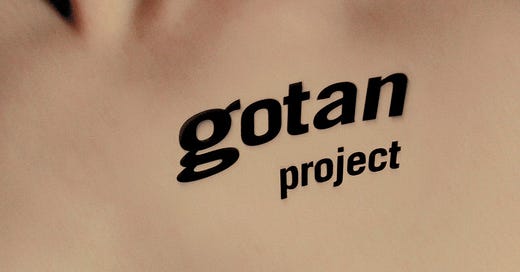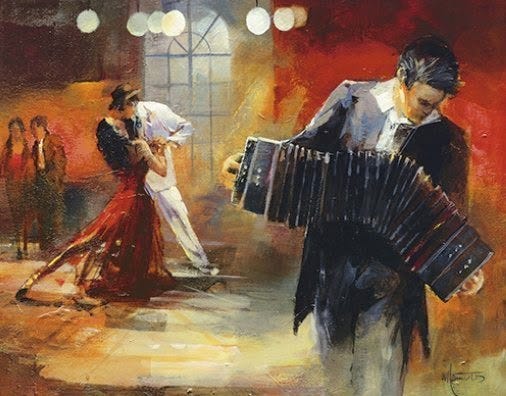EVERY GENRE PROJECT - September 7 - Electrotango
Genre of the Day - Electrotango
Album of the Day - La revencha del tango by Gotan Project (2001)
Though some genres are flashes in the pan, bursting briefly for a few years due to a particular technological innovation or by a whim of the cultural zeitgeist, other genres have the good fortune of becoming near-institutionalized with consistent global impact. Certain forms of music focalize our understanding of a particular culture and place, and national governments certainly have not been shy about essentially codifying a certain form of music in their public image from flamenco to merengue. Tango is a prime example; from its synergistic blend of musical cultures in late 19th-century Uruguay and Argentina, it’s endured as a definitional dance style worldwide. That there’s an idiom in English immortalizing it—it takes two to tango—speaks to its cultural capital. Through this consistent endurance, tango continues to brush up against new modes of music production, resulting in an alluring combination of tango instrumentation and electronic sensibilities.
Tango emerged in the Southern Cone’s largest city, Buenos Aires, in the late 19th century as the hub became home to millions of new European immigrants. In the crowded neighborhoods they settled in, their musical cultures mingled with those of the city's African population. Tango produced an idiosyncratic, even illogical blend of those influences—in contrast to many other forms of music across the Latin world derived from African traditions, tango is not a drum-centered genre. Its distinctive sound comes from the particular timbre of the bandoneon, an accordion imported by German immigrants, and the guitar leading the dance. Rhythmically, tango grew out of milonga, a fast-paced dance derived from contradanzas and the African candombe rhythm. Milonga stressed every beat rather than the typical alternating stresses of its predecessors, lending it a fast-paced insistence. Tango became a phenomenon abroad across countries and classes as an Argentinian cultural delegate in the salons of Paris in the 1920s; the romance-laden sound of the bandoneon likely resonated in like-minded accordion-loving nations, while its guitar and distinguishing rhythms set it apart.
Thanks to its worldwide reach, tango survived Argentina’s politically tumultuous 20th century (though the 21st century may be considered tumultuous someday too). Electrotango saw producers with a reverence for its traditional instrumentation playing around with the idea of using electronic production tools to bend, twist, and color its sound. Electrotango helps extend our idea of the thesis of electronic music; though synthesizers can produce truly mind-melding, futuristic sounds, the power of electronic capacities in approaching music is also reflected in its ability to enhance organic instrumentation with echoes, loops, and other expansive effects. Electrotango often mirrors the techniques of dub and ‘90s novo dub in maintaining the vivacious nature of the instrumentation while using studio wizardry to render it more enveloping and dynamic.
The flame of the Paris Olympics may be out, but it’s still lit in its love for tango; Gotan Project is a trio based in Paris that pays homage to tango’s origins in its name. Early tango lyrics were in a jargon dialect known as lunfardo that often switched syllables around; “tango” gets scrambled to “gotan.” Their attention-to-detail for tango’s history is reflected in their ambitious, dub-inflected compositions. The opener “Queremos paz” is stunning—it possesses a sophistopop, sultry smoothness, but the free-wheeling melodies sound as arresting as those that first reached the salons in the roaring ‘20s. A subtle bass riff murmurs under spoken declarations in “Chunga’s revenge,” punctured by sharp, soaring violins as the song unfolds. “Tríptico” is a gorgeous suite and veritable medley of instruments, bringing looped-guitar psychedelia, detuned synth, and jazz piano in hallucinatory harmony. It takes talent and gall to breathe new life into one of the most eternally recognizable sounds of the past musical century; it takes two, squared by the power of the studio, to electrotango.






